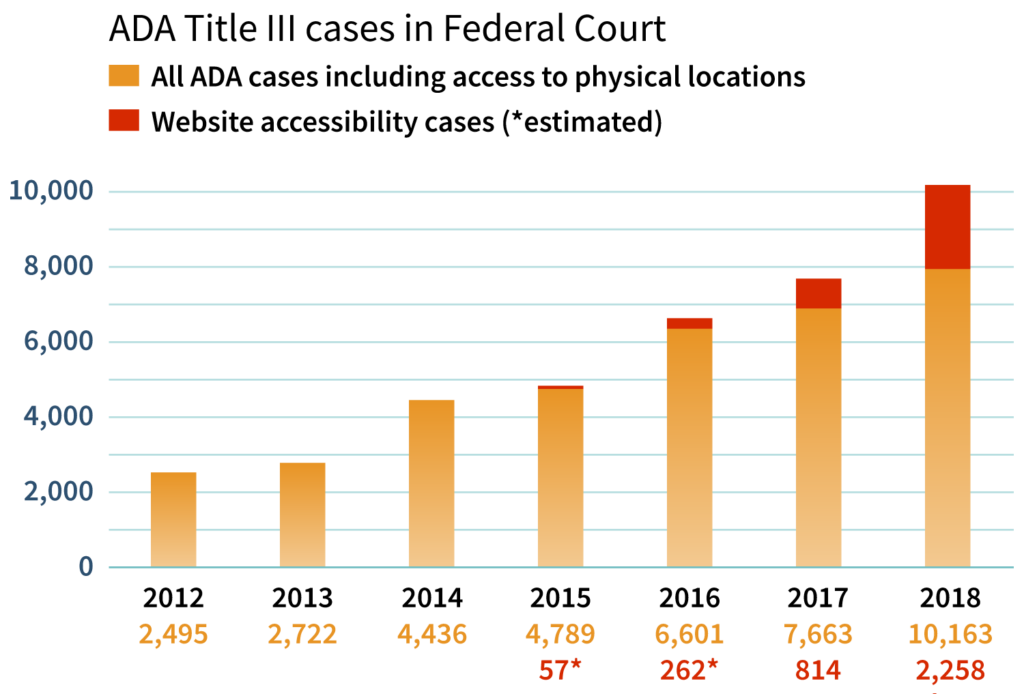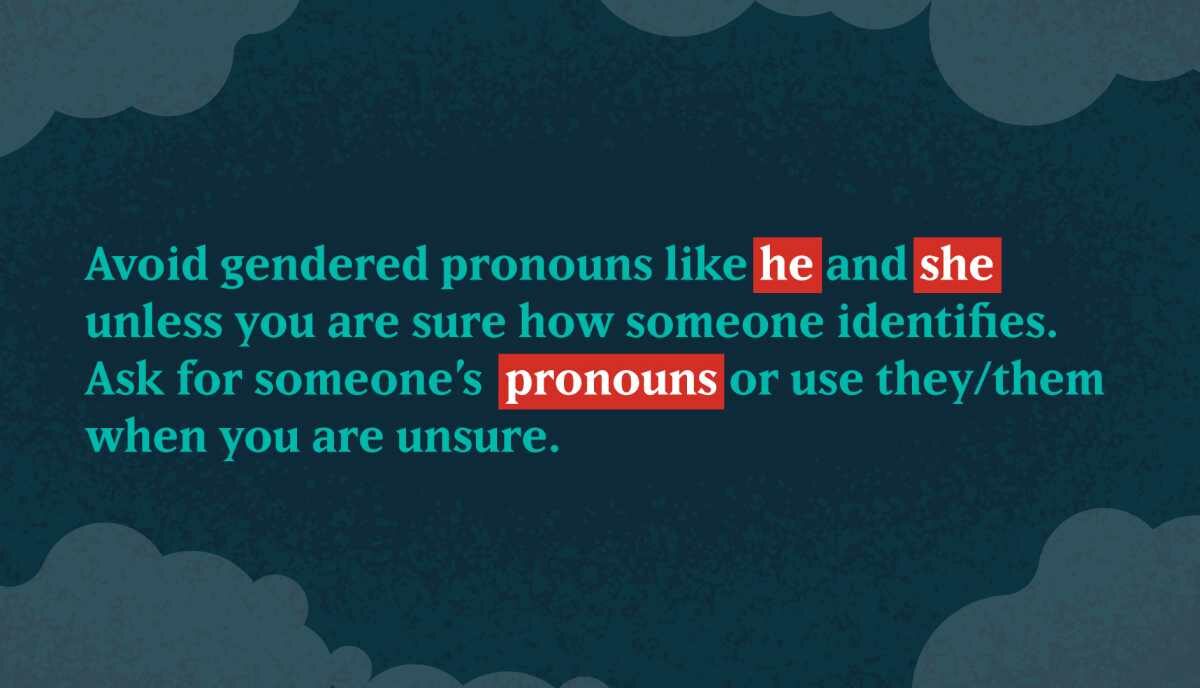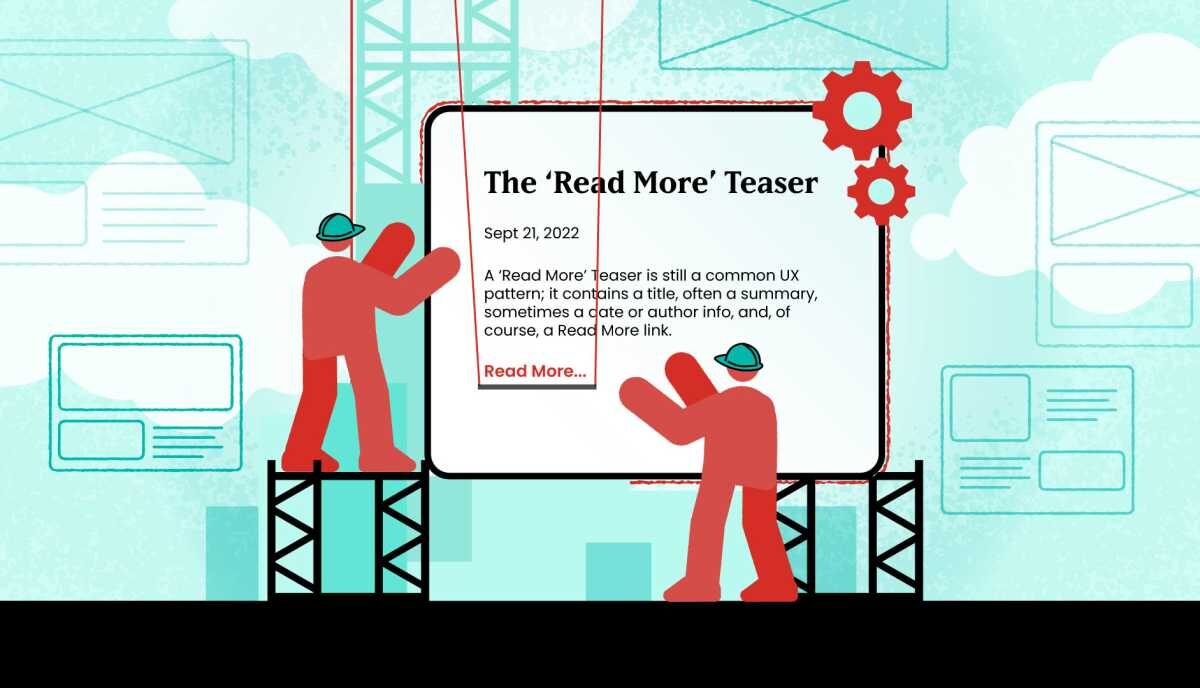The State of Website Accessibility, Serial-plaintiffs, & the lack of new ADA Legislation
This is part of our accessibility series and relies on some history and current events mentioned in other blog posts. See the full list of accessibility posts.
Like it or not, accessibility on the web is being enforced by litigation and businesses are scared. They are scared not because they are not in compliance, but because the law has been interpreted differently in different states, and Federal authorities have declined to clarify the underlying rules. It is difficult to be in compliance when there is little agreement over what compliance means. Therefore, a subset of lawyers and litigious-minded plaintiffs who are looking to profit from the gray area of accessibility law that has been exposed are taking advantage.
One of the first big legal cases involving a plaintiff suing a business because their website did not make accommodations for the blind started in 2016 with a decision in favor of the plaintiff a year later. Many more followed, and judges have been siding with plaintiffs by ruling that the Americans with Disabilities Act (ADA) applies to “places of public accommodation”. A company’s website has been interpreted to be an extension of their physical store, offering services that a store offers or additional services that a store does not. They have been judged the same as a physical location without a wheelchair ramp, proper handrails, or designated parking spots.
The legal argument in the Winn Dixie supermarket case set the standard for how the ADA has been used to judge virtual online stores that are an extension of the physical location and services:
Although Winn-Dixie argues that Gil has not been denied access to Winn-Dixie’s physical store locations as a result of the inaccessibility of the website, the ADA does not merely require physical access to a place of public accommodation,” [the judge] wrote. “Rather, the ADA requires that disabled individuals be provided ‘full and equal enjoyment of the goods, services, facilities, privileges, advantages, or accommodations of any place of public accommodation.’”
Businesses Deal with Spurious Litigation
Since it has been shown that a legal argument can be made, there has been an increase of lawsuits in the past few years. Lawyers and serial-plaintiffs have taken many cases to court in the hopes of settling for fees and restitution. Some awards have gotten very large (more later). Businesses have started to worry.
Serial-plaintiffs have gotten so effective that businesses of all stripes have gotten very scared. So much so, in fact, that we have heard personally from an artist client in New York City and an e-commerce client that one of their greatest fears lately is being sued for their website.
You might think that an individual artist who sells a painting for a few thousand dollars would be too small of a target for a serial-plaintiff, but he was scared because his friends and art galleries in his community have already been sued. He figures it is just a matter of time. Both people have expressed that they would rather shut their websites down than settle out of court or go to trial. They would rather take their business offline than contribute to an epidemic of lawsuits.
The Increase Is Real
Since two anecdotal examples are not enough, here are some statistics to back it up.
- Lawsuits increased from 814 in 2017 to 2,258 in 2018 — an increase of 177%. Source
- In one filing, a single plaintiff brought suit against 50 colleges in late 2018 for non-compliance with the ADA. The colleges are located all over the country, but because they recruit students from New York, it has been argued, they can be sued in New York. Five other colleges were sued by the same plaintiff earlier the same year. Source>
- Of note, since we mentioned New York, out of the 2,258 lawsuit filings in 2018, 1,564 were in the state of New York. Source
- More than 100 lawsuits have been settled in New York City aimed at art galleries with an average cost of $15,000. These suits were all brought by 2 individuals. Source. This led to a report entitled Serial Plaintiffs: The abuse of ADA Title III; An in-depth look at how plaintiff’s lawyers exploit a law with good intentions (pdf)
- In Austin, Texas, one lawyer was fined and suspended from practice for filing approximately 385 lawsuits on behalf of one disabled client alleging technical violations of the ADA. Source

The Crux of the Problem
We do not want to give the impression that we are against the enforcement of the ADA as it pertains to websites. We agree that a company’s website is an extension of their physical locations, and further, companies that do not have brick and mortar stores need to also comply with the law. It makes good business sense — increase the number of people who can spend their money with you — and it’s just the humane thing to do as well. To leave a certain type of person out of your product or content or experience is to split our world further into the haves and the have-nots.
Litigation can be a good thing. If laws do not have teeth and people who do not follow the law go unpunished, no one else will spend the extra time and investment to comply with the laws. The original ADA became law in 1990 but it took many years and even more lawsuits to convince businesses to comply. Feeling the bite of real teeth was a good thing and we are all the better for it.
We take our abilities for granted. A disability is not just a lack of vision, hearing, or movement. They are temporary (broken bones), they are mild (color blindness), they are cognitive (sleep deprivation, chemical-induced), and they are degenerative and evolving (vision, hearing, or cognitive problems due to age or degenerative diseases).
On the other hand, a spate of litigation that takes advantage of the fuzziness of current law, as well as the lack of seriousness that some businesses have placed on being compliant does nothing to educate people on what accessibility means and why it is important to achieve. It breeds resentment — between the businesses and these hyper-litigious individuals and between the general public and the accessibility cause. Suddenly, these laws are seen as needless, arbitrary, and expensive. They become another tax on the small business once the larger pockets have been picked.
How Did We Get Here?
Let’s take a step back into the history a little bit, and see how we got here.
George H.W. Bush signed the ADA into law in 1990. Its roots went further back, though, into the Rehabilitation Act of 1973. Section 504 banned discrimination on the basis of physical ability and was applied to the recipients of Federal funds. Section 508 is a similar set of legislation that may sound more familiar, and it was meant to ensure that any information available to able-bodied people was also available to those with different abilities. This was enacted way back in 1998, and came alongside other efforts like the Website Accessibility Initiative in 1997, which intended to put a framework around best practices in web development to accommodate those who needed to use assistive technology.
Enforcement of the ADA and Section 508 is handled by the Department of Justice (DOJ). They acknowledged that the web has evolved into something bigger and more entrenched than they envisioned 20 years ago, so in 2015 they announced that they planned to amend the language of the ADA to include websites under the statute. On January 5th, 2017, they released the “508 Refresh” and declared the WCAG 2.0 levels A and AA as the minimum compliance levels for public-facing content. Federal agencies and those doing business with Federal agencies had to comply with these new rules.
It was widely believed that the DOJ was going to follow the 508 Refresh with a refresh of the ADA itself, as they promised in 2015. You might guess what happened — the 2016 election and a shift to small-government conservatism in the administration.
With Executive Order 13771 signed 10 days after the inauguration, federal agencies now had to remove two regulations before proposing a new one. That new regulation had to also be net-zero cost-wise. This has led to a near complete halt on all new regulations across all agencies.
The clarification that the business community needed from DOJ and the ADA died on the vine.
New Regulation Is not the Enemy — Bad Regulation Is
The idea that any regulation is bad is foolhardy. In this case, the Department of Justice has been unable to clarify how the ADA applies to websites. To fill the vacuum, states have stepped in with their own interpretations. In some cases, this is great — states tend to legislate more from the ground up than the federal government does. Most of them have adopted the standards that the DOJ were going to formalize, namely WCAG 2.0 level AA.
Specifically, “places of public accommodation” is the language that is open to interpretation. When the law was drafted, the internet was not yet a place of “public accommodation.” It was still relatively small and catered to a smaller (and more affluent, generally) audience. Fifteen to twenty years later, the internet has ingrained itself in our lives. Is it now a “place of public accommodation?” Some courts think so.
Businesses have been blind-sided by this uncertainty. They are finding out through litigation rather than through rule-making that they are required to make their websites accessible. Unscrupulous lawyers have been taking advantage of the uncertainty of the law.
Further, the landmark Winn-Dixie case is still in the appeals process. Winn-Dixie is arguing that websites are not places of public accommodation, and that application of the WCAG as a guideline violates due process because it is not law. The Eleventh Circuit court is still deciding the case. Since the original verdict was delivered, other courts have made similar decisions. Some have decided for the plaintiff when a company’s website is “connected to a physical place in some way.” Others have declined to require this connection.
While states’ rights can be a powerful way to drive national policy, in this instance it leads to bifurcation and confusion. If states continue to lead the way in enforcing accessibility laws, how is an online entity that conducts business in multiple states to comply — the internet is the same everywhere, after all — and keep up with the most stringent rulings in one or two states? Who wins the race to be the state that drives accessibility standards?
Some Clarification from DOJ has Entered the Record
The DOJ went on record saying that they were going to do something, then did not follow through. In June 2018, 103 members of the US House of Representatives sent a letter to then-Assistant Attorney General Stephen E. Boyd requesting clarification on what Congress saw as ambiguous guidance that has “created a liability hazard that directly affects businesses in our states.”
The DOJ responded on September 25, 2018:
The Department first articulated its interpretation that the ADA applies to public accommodations’ websites over 20 years ago. This interpretation is consistent with the ADA’s title III requirement that the goods, services, privileges, or activities provided by places of public accommodation be equally accessible to people with disabilities. Additionally, the Department has consistently taken the position that the absence of a specific regulation does not serve as a basis for noncompliance with a statute’s requirements. Absent the adopting of specific technical requirements for websites through rulemaking, public accommodations have flexibility in how to comply with the ADA’s general requirements of nondiscrimination and effective communication. Accordingly, noncompliance with a voluntary technical standard for website accessibility does not necessarily indicate noncompliance with the ADA […]. Given Congress’ ability to provide greater clarity through the legislative process, we look forward to working with you to continue these efforts.
The DOJ maintains the position that Title III can be applied to places of public accommodation and that websites are places of public accommodation. Further, they say that this has always been the case by saying “we’re not sure where the controversy is, it’s always been this way.” They go on to say that companies can make their websites accessible by any means, but that any existing standard right now is arbitrary. The goal of the ADA is accessibility as broadly defined, and the ways in which to make a site accessible or measure the accessibility of the site are up to you. Until Congress changes things, of course.
This statement by the DOJ only clears up a little existing ambiguity. It does codify the stance that “places of public accommodation” includes websites, but the standards by which we can measure accessibility to determine whether or not someone is in compliance continues to be a huge gray area.
A Sad State of Affairs
The DOJ, Congress, and the current administration have legislated in absentia. The lack of clearly defined rules and goalposts has allowed a free market mentality in legal proceedings, which has led to states and circuit court jurisdictions defining what compliance looks like on a case-by-case basis. And there have been many notable cases to look at.
- The Ninth Circuit Court (California and western states) decided in Robles v. Domino’s Pizza that “the ADA applies to websites and mobile apps that connect customers to the goods and services of restaurants and other places of public accommodations.” Source 1 and Source 2
- Hayes v. Dunkin Donuts LLC>: a plaintiff claimed that their website was not compliant with his screen reader software, and therefore could not use the store locator or purchase gift cards online. Source
- National Federation of the Blind v. Target Corp: The suit claimed that blind people using assistive technology could not purchase items online. Target settled for $3 million dollars, far more than it would have cost to correct the problems. Source
- Suits against Avanti Hotels, Hooters, Hulu, and CVS allege websites were inaccessible to people who have problems seeing or hearing. Source
- Similar suits levied against Amazon, Rolex Watch, Fox News, Burger King, Nike, CNN, Porsche, Hershey, Nintendo, Pandora, Mitsubishi, Bed Bath Beyond, Dow Jones, Bank of China, Kmart, GrubHub, McDonald’s, Blue Apron, Hobby Lobby, Domino’s, Bag’n Baggage, Miami University, Reebok, the NBA, Harvard, MIT, eHarmory, Bank of America, Ace Hardware, Safeway, US Department of Education, Netflix, Walt Disney, Hilton Hotels, Charles Schwab, Staples, Rite Aid, JetBlue, Quizno’s, Arby’s, T.G.I. Friday’s, Red Lobster, Sizzler, Supercuts, J.C. Penny… Source
Instead of leading with legislation that clearly defines what the benchmarks for accessibility are, litigation is the driving factor defining accessibility and what non-compliance looks like. Accessibility compliance is something that businesses should strive for, no doubt, but the lack of rules is proving to be much more expensive for businesses than if we had clearer guidelines in place. This administration’s decision that any new legislation is bad legislation hasn’t added to the costs of the Federal government, but it has added to the costs burdening individual companies.
While these larger companies listed above in large part stayed in business, how many smaller businesses have had to close their doors due to litigation? How many companies are being willfully negligent in their approach to web accessibility? It seems as though the genie is out of the bottle, and it is running amok without a way to slow it down, let alone stop it. And that’s just plain sad.
No Silver Bullet
For lack of another widely accepted standard, WCAG 2.0 and now 2.1 remain as the go-to accessibility measurement. The DOJ has stated that adherence to any written standard is not an indication of compliance or non-compliance, but it is also the only measure that we currently have. The DOJ has also stated that it will not update the guidance for websites — the guidance that we sorely need.
What can a business do in the meantime? The only way to protect oneself from litigation is to put in the effort to diagnose and remediate your website. Businesses should know and understand that:
- There is no governing-body-issued “compliance certificate” that can safeguard a business from litigation. Companies that offer any sort of certificate are selling a false promise. Compliance with the law, squishy as that may sound, is the only way to protect one against litigation
- Showing good faith seems to help when cases come to court. Be up front about your company’s accessibility policy and any features on your website that do not meet standards. Those that have shown transparency and progress towards identifying and correcting accessibility problems have met with more lenient rulings. (A case against Kroger Stores was dismissed when they corrected the problems swiftly — paragraph 2)
- Building a website to be as accessible as possible not only protects a company from litigation on behalf of differently-abled individuals, but it is also good business sense in the long run — the more people that can access your tools, services, and content, the more customers you have over time
- If your site is not as accessible as it could be, and a website redesign or replatform is in the pipeline, start to think about, define, and build accessibility into the process now
From the perspective of an accessibility advocate, one of the few positives I can see from all this is that we are all talking about accessibility for the web, and businesses are taking this seriously. Arguably, we should have all been doing that from the very beginning.
Follow up
Keep an eye on the “ADA Education and Reform Act of 2017” (House of Representatives 620). It was passed in 2017 by the House but not taken up by the Senate:
The Act would impose certain preconditions before a lawsuit could be filed. For example, a potential plaintiff would have to provide written notice to a business owner of an alleged accessibility barrier and permit the opportunity to respond in writing within 60 days about how the barrier may be addressed. The businesses would then have 120 days to demonstrate a willingness to correct a purported ADA violation. Only if the business owner does not remove the barrier, or does not demonstrate substantial progress in removing the barrier, would the individual be permitted to sue.
The language of the Act does not specify that websites are part of public accommodation, but rather, the proposed grace period would apply to complaints against physical and virtual barriers to access. Nothing similar has yet been introduced during this present Congress, but it seems that at least some of Congress understands that there is an epidemic of litigation that is negatively affecting the business climate in their states.
Updates:
- 2019 was another busy year with 10,206 accessibility lawsuits compared to10,163 in 2018. Source ADATitleIII.com
- Domino’s plaintiff brief (Robles) puts a finer point on what equal access means. The Domino’s position is that they should not be liable for failing to offer full web access to disabled customers who could use other means to order pizzas is like claiming that a stairway violates the ADA because it’s not accessible to people in wheelchairs, even if the business offers a ramp. Robles counters that this is not the correct perspective. Rather, the case “resembles one in which nondisabled customers have ready access to the front door through a stairway that adjoins a sidewalk, while wheelchair users must enter the back door via a ramp surrounded by trash dumpsters in an alley.” Inaccessible web services, the brief contends, are the virtual equivalent of the back-alley entrance for disabled customers. Source Reuters
- The Surpreme Court decided against hearing the Domino’s vs. Robles case, which means that the current reading of Title III holds and that websites are places of public accommodation. Source ADATitleIII.com



